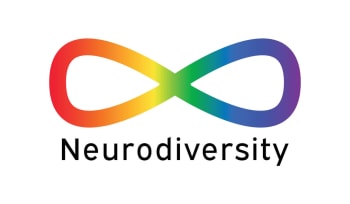This informal CPD article, ‘Laser stacking – The Future of Skin Health’, was provided by Dr. Tijion Esho of CULTSKIN, who specialises in aesthetic medicine with a focus on non-surgical procedures.
Introduction
The field of aesthetics is rapidly evolving, with new technologies emerging to address a wide range of skin concerns. Multi-modality skin treatments— a refined version of "laser stacking"—is now a cornerstone of an advanced approach to skin health. This technique involves combining multiple non-invasive technologies in a single session to achieve comprehensive skin rejuvenation, ensuring enhanced results with minimal downtime.
This article explores the science, benefits, and considerations behind multi-modality skin treatments, examining their role in modern aesthetic practice.
What is Multi-Modality Skin Treatment?
Multi-modality skin treatments refer to the strategic combination of different energy-based and regenerative technologies in a single session to maximise therapeutic effects. Instead of relying on a single device, this approach synergistically integrates lasers, radiofrequency (RF), ultrasound, and other modalities to target multiple layers of the skin.
A typical multi-modality session in clinic might include:
- A resurfacing laser (e.g., fractional CO₂ or erbium laser) to smooth skin texture and stimulate new collagen.
- Radiofrequency (RF) microneedling to improve skin laxity and boost collagen production.
- LED light therapy to accelerate healing and reduce post-treatment inflammation.
The Science Behind Combining Technologies
The rationale behind multi-modality treatments is layered stimulation of biological processes. Different devices work at different depths of the skin and trigger complementary pathways of tissue repair and regeneration.
Key Mechanisms of Multi-Modality Treatments
- Collagen Induction – Fractional lasers and RF microneedling both stimulate fibroblast activity, leading to increased collagen and elastin production. (1)
- Pigment Reduction – Lasers target melanin clusters, while ultrasound-based treatments enhance absorption of brightening serums. (2)
- Tissue Tightening – RF and ultrasound promote neocollagenesis and tissue remodelling, reducing skin laxity over time. (3)
- Healing Acceleration – LED light therapy reduces inflammation, helping the skin recover faster from more intensive procedures. (4)
By addressing multiple skin pathways simultaneously, results are more pronounced, and fewer sessions are needed compared to single-modality treatments.
Clinical Benefits of Multi-Modality Skin Treatments
Enhanced Efficacy – Combining treatments allows
for complementary effects, yielding more dramatic and long-lasting
results. (5)
Reduced Downtime – Instead of multiple recovery periods for
separate treatments, multi-modality sessions integrate everything efficiently.
Customised Treatments – Plans are tailored based on individual skin
concerns, ensuring precision and optimal outcomes.
Cost-Effectiveness – While the upfront cost may be higher, patients
often save money in the long run by reducing the number of sessions
required.
Safety Considerations & Best Practices
While multi-modality treatments offer exceptional benefits, precision and expertise are paramount. Overlapping energy-based treatments can increase the risk of irritation, burns, or post-inflammatory hyperpigmentation if not administered correctly.
Best Practices for Safe Multi-Modality Treatments
Skin Assessment: Use advanced imaging
to pinpoint underlying skin conditions before determining the right
treatment plan. (6)
Gradual Approach: Start with lower energy settings to minimise the
risk of over-stimulation and inflammation.
Proper Sequencing: Treatments should be layered
strategically—lasers before RF or microneedling, followed by LED for
healing.
Post-Treatment Care: Patients should follow a tailored skincare
regimen to support the healing process and enhance results.
Is Multi-Modality Right for Every Patient?
Not all patients will benefit from a stacked approach. Those with very sensitive or reactive skin may require a phased approach, spacing treatments out over multiple sessions rather than combining them at once. Patients with active inflammatory conditions (e.g., severe acne, rosacea) should proceed with caution, as aggressive treatments may exacerbate symptoms. (7)
Every patient should undergo a thorough consultation and skin analysis before any treatment plan is developed.
Conclusion
As technology continues to advance, customised, multi-layered skin treatments will become the standard, moving away from isolated treatments and embracing a holistic, patient-centric approach to skin health.
Multi-modality treatments represent the future of aesthetic dermatology, allowing practitioners to deliver superior results while optimising patient experience. The integration of complementary technologies is both an art and a science, requiring expertise, careful planning, and a deep understanding of skin physiology.
For practitioners looking to enhance their aesthetic offering, investing in a multi-modality approach can set a new gold standard in personalised skin care.
We hope this article was helpful. For more information from CULTSKIN, please visit their CPD Member Directory page. Alternatively, you can go to the CPD Industry Hubs for more articles, courses and events relevant to your Continuing Professional Development requirements.
References
- El-Domyati, M., et al. (2023). "Collagen Remodeling in Response to Laser and RF Microneedling Treatments."Journal of Cosmetic Dermatology.
- Tanzi, E., & Lupton, J. (2024). "The Role of Lasers in Treating Hyperpigmentation." Dermatologic Surgery.
- Narurkar, V. A. (2023). "Advances in Ultrasound and RF Technologies for Skin Tightening." The Aesthetic Guide.
- Kim, J. H., et al. (2024). "LED Therapy and Its Effect on Post-Procedure Healing." Journal of Aesthetic Medicine.
- American Society for Laser Medicine and Surgery (2024). "The Efficacy of Combining Energy-Based Modalities."ASLMS Annual Report.
- Carruthers, J., et al. (2023). "The Importance of Skin Imaging in Aesthetic Consultations." Plastic and Reconstructive Surgery.
- Lain, E. (2023). "Managing Sensitive Skin in Aesthetic Dermatology." The Dermatology Times.













